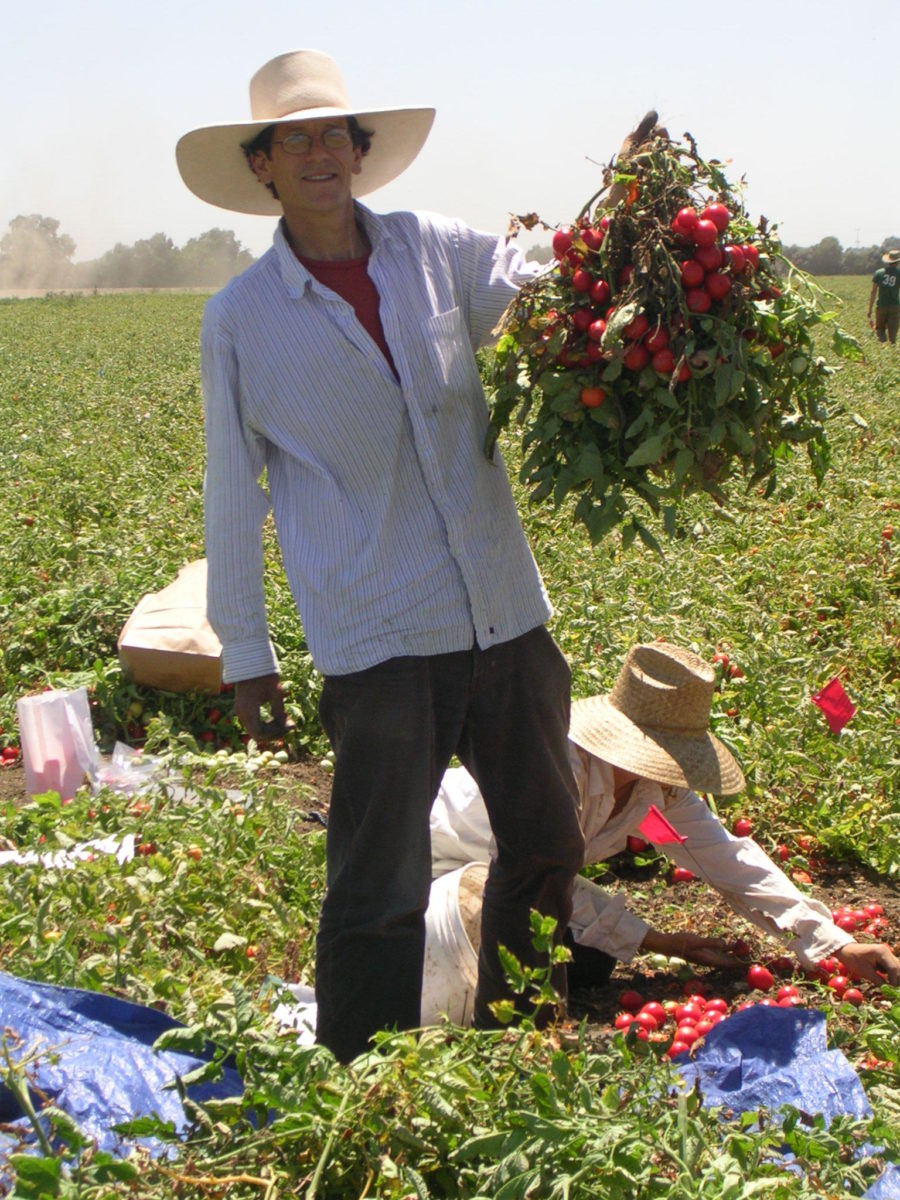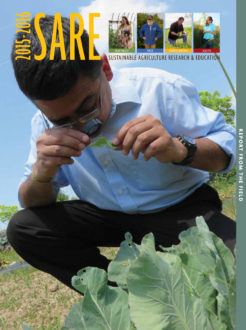SARE: ADVANCING GRADUATE STUDENT RESEARCH

Agriculture consumes about 80 percent of California’s water, and as competition for it increases, improving water-use efficiency will become ever more critical to farmers’ long-term productivity.
Finding ways to reduce water use in the production of processing tomatoes, a major crop in the state, has been the focus of Felipe Barrios Masias. As a University of California (UC) Davis graduate student in 2010, he used a SARE grant to study the water needs of processing tomatoes under furrow irrigation. His findings were striking—farmers could use 25 percent less water while maintaining yields—and have led him and his colleagues to newer lines of inquiry that could result in a better understanding of how to maintain high tomato yields with less water.
“It is apparent to me that processing tomatoes have a great potential to perform well under lower water availability. This is one of the main outcomes of the SARE project,” says Barrios Masias.
During the SARE project, Barrios Masias studied the response of various tomato cultivars to alternate furrow irrigation, or irrigating every other furrow instead of all furrows, which is one of the more conventional approaches to watering. By partially watering fields, farmers who rely on furrow irrigation could use 25 percent less water without hurting yield or fruit quality.
Some California farmers, who grow about one third of the world’s processing tomatoes, were interested in the results. But because Barrios Masias completed his project in 2011, a year before the drought began, water was more plentiful and adoption of alternate furrow irrigation was initially low. That has changed. “For farmers using furrow irrigation in 2015, my guess is that many will probably be using alternate furrow irrigation at some point in the season, since water availability is such an issue during the drought,” says UC Davis Professor Louise Jackson, his research adviser.
The project was conducted with partnerships that were critical to its success: Trials were done on four farms in collaboration with a research and development team from the Campbell’s Research and Development Unit in Davis, Calif. Having such an industry partner helped the project because “they know tomatoes and they were interested in reducing their water use,” Jackson says.
Barrios Masias says his SARE project helped lay the groundwork for follow-up research funded by a USDA Specialty Crop Block Grant, on traits associated with the tomato’s ability to capture and use water efficiently, particularly in the roots. “We know that a lot is happening at the roots and we need to do a better job in understanding their physiological role in drought resistance,” Barrios Masias says.
This can have implications for drought resistance and the improved management of many irrigation systems, including furrow and drip, which is becoming increasingly common in tomatoes and other crops.
Just as important, the project was a critical stepping stone for Barrios Masias, now an assistant professor of sustainable horticulture at the University of Nevada Reno. “This SARE graduate student project was really good for my career, and I would urge my students to pursue a grant like it,” he says.
For more information, see the project reports for grant GW10-010.
Free Resources!
SARE bulletin: Smart Water Use on Your Farm or Ranch (free download or hard copies).
Western SARE bulletin: Boosting Agricultural Production through Water-Use Efficiency (free download).
Conduct topical searches of hundreds of educational resources, including water management.
